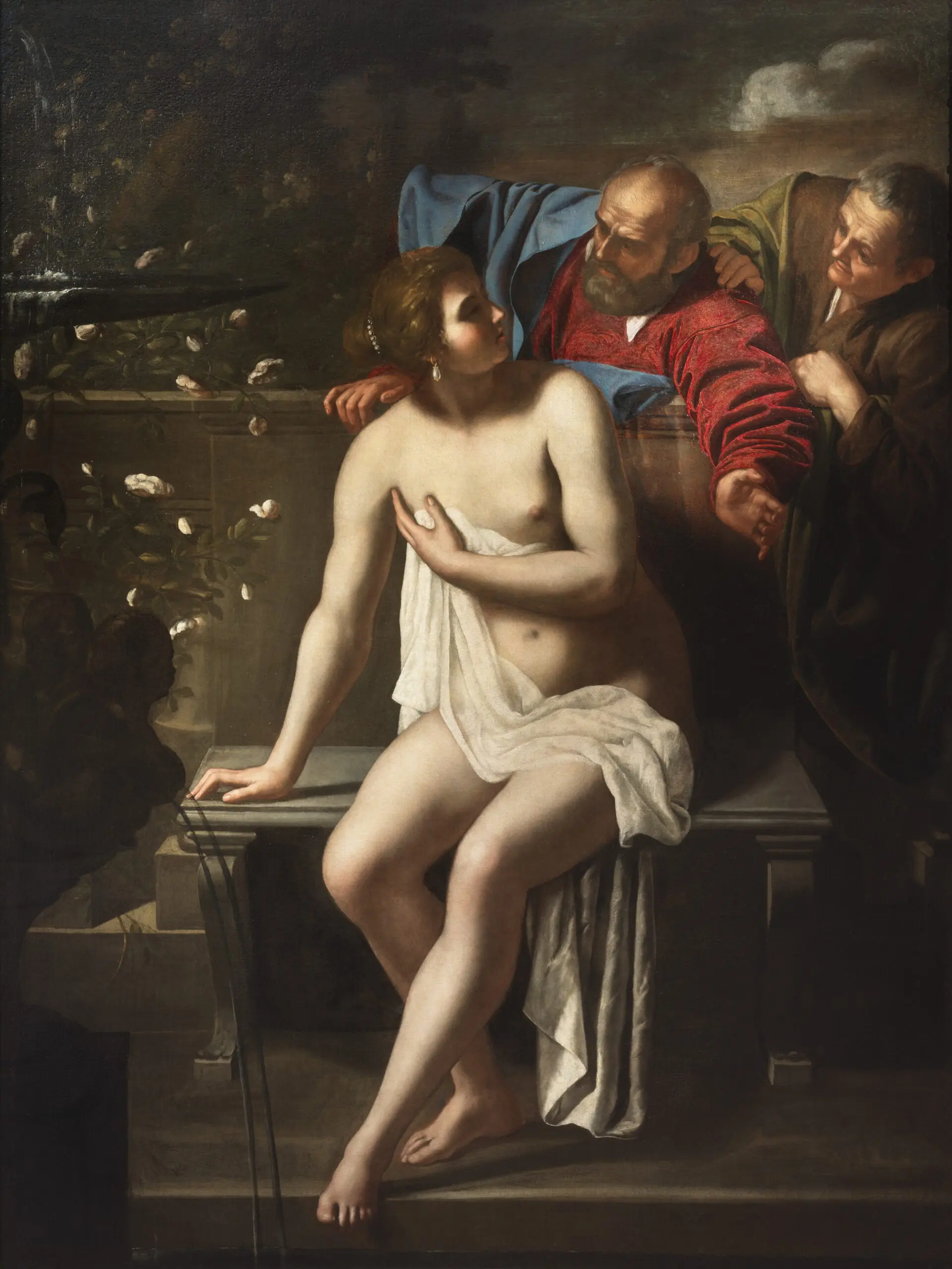Artemisia Gentileschi
Susanna and the Elders, 1644-48
Oil on canvas, 200 x 150 cm
Inventory number: 0261NMK
Acquired in 2025 with support from the New Carlsberg Foundation and Aage og Johanne Louis-Hansens Fond
Artemisia Gentileschi stands out as Italy’s most important female artist of the 17th century. From a young age she assisted her father, the painter Orazio Gentileschi, in his studio. As a young woman, she was the victim of rape and endured a difficult trial, an experience that shaped her remarkable career focused on religious subjects with strong female protagonists. The apocryphal legend of Susanna and the Elders tells the story of two men spying on Susanna in her bath and threatening to accuse her of adultery (a crime punishable by death) unless she yields to them. The story ends in a trial where Susanna is acquitted. Throughout her career, Artemisia Gentileschi returned to this motif, which she painted more often than any other. In this version, from her late period, the artist emphasizes the psychological struggle unfolding between Susanna and the Elders.
About Artemisia Gentileschi (1593-1654)
Artemisia Gentileschi grew up in Rome, where she was trained as a painter by her father, the renowned artist Orazio Gentileschi. She was admitted to the prestigious Accademia delle Arti del Disegno in Florence as one of the first women. Inspired by Caravaggio’s realism and dramatic use of light, she quickly developed her own artistic style and choice of subjects. Drawing on biblical and mythological themes, she highlighted heroines who triumphed over male dominance through intelligence or cunning. Through her repeated depictions and reinterpretations of figures such as Susanna, Judith, Mary Magdalene, Cleopatra, and Lucretia, she portrayed female characters as true protagonists, endowed with agency, dignity, and strength. She achieved considerable recognition in her own time, including commissions from the Medici family in Florence and King Charles I of England.

